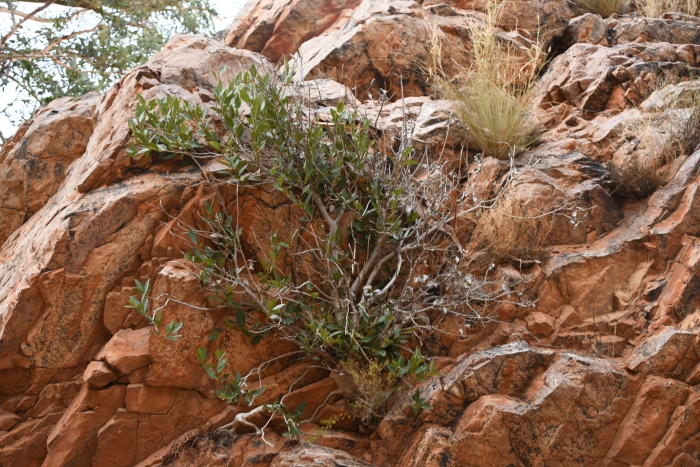Short-Stalked Fig
(Ficus brachypoda)
Short-Stalked Fig (Ficus brachypoda)
/
/

© Em Lamond
CC BY 4.0
Image By:
© Em Lamond
Recorded By:
Copyright:
CC BY 4.0
Copyright Notice:
Photo by: © Em Lamond | License Type: CC BY 4.0 | License URL: http://creativecommons.org/licenses/by/4.0/ | Uploader: em_lamond | Publisher: iNaturalist |












Estimated Native Range
Summary
Ficus brachypoda, commonly known as the Short-stalked Fig, is a tree native to the monsoon forests and rocky areas of northern Australia. As a member of the Ficus genus, it is related to approximately 750 species found in warm climates globally. This evergreen tree can grow up to 49 feet (15 meters) tall and is recognized by its large, glossy leaves and the aerial roots that are characteristic of many banyan trees. Ficus brachypoda often forms complex root structures, which, along with its dense canopy, provide essential habitat and food for various wildlife species, including birds and fruit-eating animals.
The Short-stalked Fig is valued for its ornamental features, including its striking root system and canopy, making it a focal point in large gardens and parks. It is also important for its ecological contributions, such as creating microhabitats and supporting biodiversity. In cultivation, it requires well-drained soils and can tolerate a range of light conditions from full sun to part shade. While it is relatively low-maintenance, it is not commonly grown in small gardens due to its potential size and the space required for its root system. It is also used in reforestation projects and habitat restoration. Care should be taken as it can become invasive outside its native range, and its aggressive roots may damage structures if planted too close.CC BY-SA 4.0
The Short-stalked Fig is valued for its ornamental features, including its striking root system and canopy, making it a focal point in large gardens and parks. It is also important for its ecological contributions, such as creating microhabitats and supporting biodiversity. In cultivation, it requires well-drained soils and can tolerate a range of light conditions from full sun to part shade. While it is relatively low-maintenance, it is not commonly grown in small gardens due to its potential size and the space required for its root system. It is also used in reforestation projects and habitat restoration. Care should be taken as it can become invasive outside its native range, and its aggressive roots may damage structures if planted too close.CC BY-SA 4.0
Plant Description
- Plant Type: Tree
- Height: 10-20 feet
- Width: 8-15 feet
- Growth Rate: Moderate
- Flower Color: N/A
- Flowering Season: Spring, Summer
- Leaf Retention: Evergreen
Growth Requirements
- Sun: Full Sun, Part Shade
- Water: Medium
- Drainage: Medium, Fast
Common Uses
Bird Garden, Erosion Control, Low Maintenance
Natural Habitat
Monsoon forests and rocky areas of northern Australia
Other Names
Common Names: Creek Sandpaper Fig
Scientific Names: , Ficus brachypoda, Ficus eugenioides var. puberula, Ficus lachnocaulon, Ficus obliqua var. puberula, Ficus platypoda var. lachnocaulon, Ficus vitellina, Urostigma brachypodium, Urostigma brachypodum, Urostigma lachnocaulon
GBIF Accepted Name: